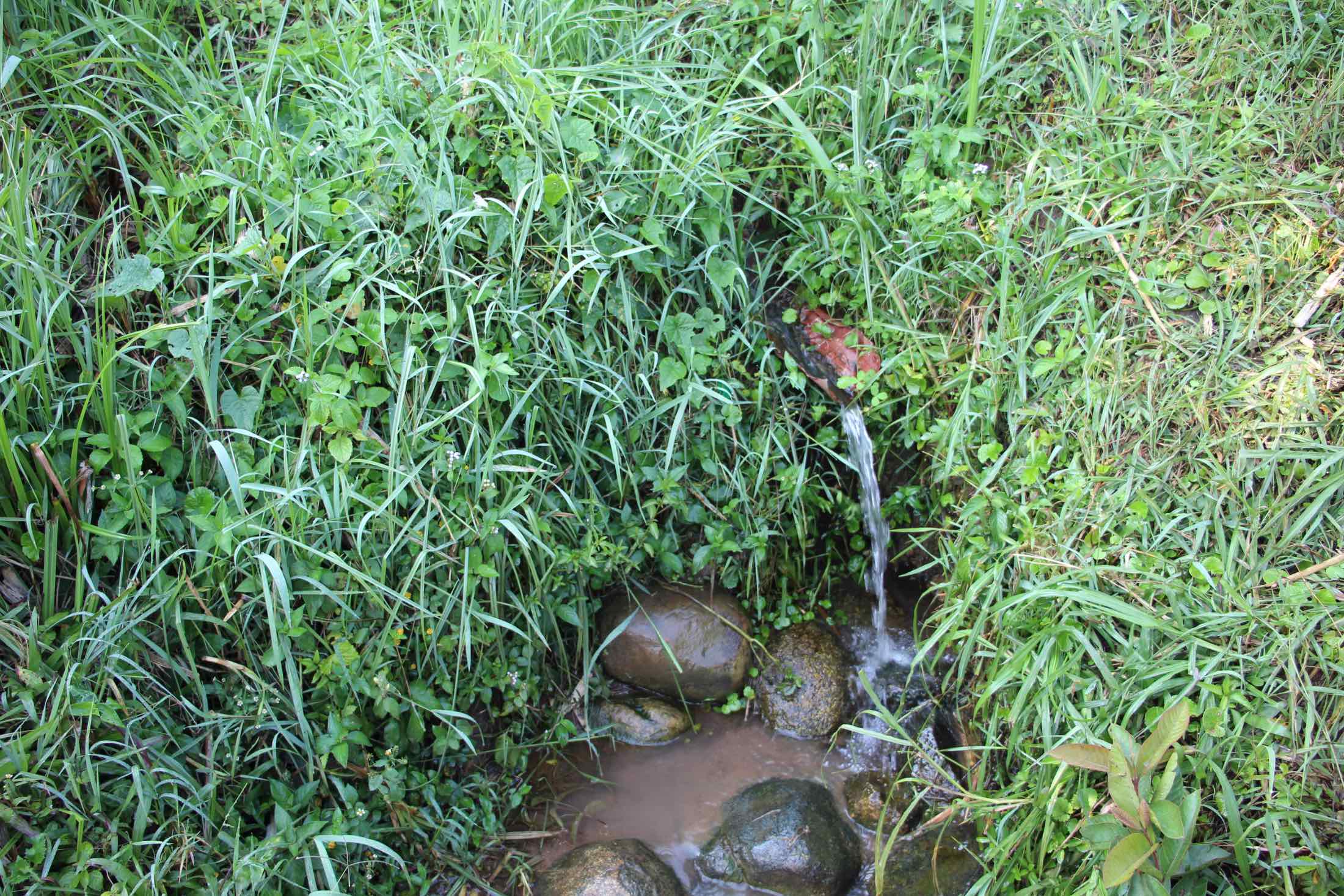The Patrick Muyembere spring is located in the community of Murumba, in the Kakamega region of western Kenya. The unprotected spring sits near the bottom of a slope surrounded by green vegetation and is the only water source serving this community of 175 people.
This unique community is home to people from various tribes who live in peace regardless of their differences. In Murumba, most community members are small-scale farmers who grow sugarcane, maize, beans, or cassava. Some also rely on brick-making to help earn a living.
The main challenge with this water point is it's open to all sources of contamination, including runoff, since it's located at the bottom of a slope. The community members have improvised by adding a section of iron sheeting (rusty) to make collecting water easier, but it is likely adding to the water contamination.

Community members shared that when they use the water collected from the spring without boiling it, they end up at the hospital due to illness. Since most of them depend on farming, paying medical bills becomes a challenge and strains families in the community.
Another challenge is the overcrowding at the spring. Some families wake up as early as 5:30 and head to the spring to fill all of their water containers to avoid overcrowding during the day.
"I feel so sad when I see young ladies wasting their time at the water point instead of doing some constructive work to improve their lives. It's my prayer that this water point will be protected," said Emelda Mukoshi, farmer, 45.

"We waste our precious time at the spring waiting for elderly people to draw water first. This time can be converted into study time, and our performance will automatically improve. That is if the spring will be protected," commented Melvin S., a 16-year-old young lady.
What We Can Do:
Spring Protection
Protecting the spring will help provide access to cleaner and safer water and reduce the time people have to spend to fetch it. Construction will keep surface runoff and other contaminants out of the water. With the community’s high involvement in the process, there should be a good sense of responsibility and ownership for the new clean water source.
Fetching water is a task predominantly carried out by women and young girls. Protecting the spring and offering training and support will, therefore, help empower the female members of the community by freeing up more of their time and energy to engage and invest in income-generating activities and their education.
Training on Health, Hygiene, COVID-19, and More
To hold trainings during the pandemic, we work closely with both community leaders and the local government to approve small groups to attend training. We ask community leaders to invite a select yet representative group of people to attend training who will then act as ambassadors to the rest of the community to share what they learn. We also communicate our expectations of physical distancing and wearing masks for all who choose to attend.
The training will focus on improved hygiene, health, and sanitation habits in this community. We will also have a dedicated session on COVID-19 symptoms, transmission routes, and prevention best practices.
With the community’s input, we will identify key leverage points where they can alter their practices at the personal, household, and community levels to affect change. This training will help to ensure participants have the knowledge they need about healthy practices and their importance to make the most of their water point as soon as water is flowing.
Our team of facilitators will use a variety of methods to train community members. Some of these methods include participatory hygiene and sanitation transformation, asset-based community development, group discussions, handouts, and demonstrations at the spring.
One of the most important issues we plan to cover is the handling, storage, and treatment of water. Having a clean water source will be extremely helpful, but it is useless if water gets contaminated by the time it is consumed. We and the community strongly believe that all of these components will work together to improve living standards here, which will help to unlock the potential for these community members to live better, healthier lives.
We will then conduct a small series of follow-up trainings before transitioning to our regularly scheduled support visits throughout the year.
Training will result in the formation of a water user committee, elected by their peers, that will oversee the operations and maintenance of the spring. The committee will enforce proper behavior around the spring and delegate tasks that will help preserve the site, such as building a fence and digging proper drainage channels. The fence will keep out destructive animals and unwanted waste, and the drainage will keep the area’s mosquito population at a minimum.

 Protected Spring
Protected Spring
 Rehabilitation Project
Rehabilitation Project









































